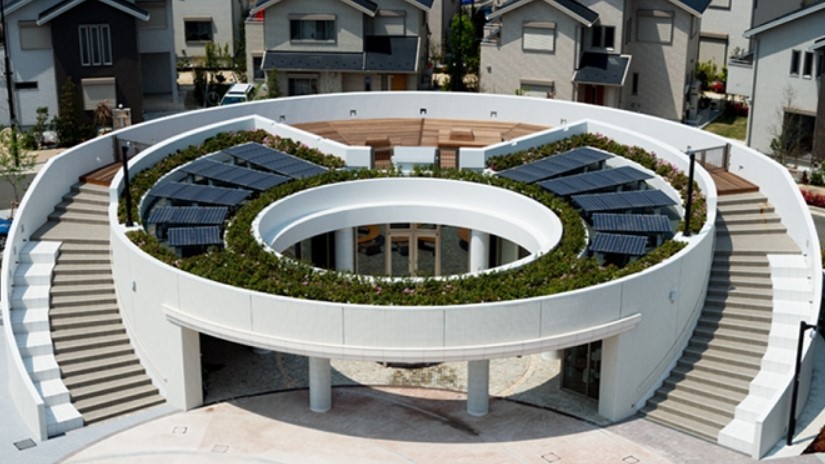In 2016, Japan introduced the Society 5.0 policy framework in its 5th Science and Technology Basic Plan, aiming to deeply integrate cyberspace and physical space through AI, IoT, and big data to address societal issues such as aging populations and frequent natural disasters, thereby improving citizens' quality of life and economic efficiency. Regions like Hokkaido, Fukushima, and Tokyo have implemented various smart city pilot programs to embody this vision.
Taiwan, facing urban aging, traffic congestion, and inadequate environmental monitoring, sees smart city development as a necessary pathway for transforming urban governance.
1. Distinctive Features and Cases of Smart City Development in Japan
- Policy-Driven and Multi-Stage Experimentation: Since the 2000s, Japan has advanced from eco-model cities and smart communities—testing energy management systems and microgrids—toward a next-generation smart city model led by the private sector. As of now, Japan has launched about 229 smart city projects across 157 regions, targeting local issues such as aging demographics, transportation isolation, and energy decentralization.
- Fujisawa Sustainable Smart Town: Located about 50 km west of Tokyo, this smart city project was redeveloped from a former Panasonic factory site. Home to around 3,000 residents, the project integrates solar rooftops, heat pumps, fuel cells, and smart home management systems. The project aims to reduce carbon emissions by 70%, water usage by 30%, and can sustain three days of off-grid power in case of disaster.
- Kashiwa-no-ha Smart City: This PPP-driven project is co-led by local governments and private enterprises, focusing on smart transport, energy, and healthcare. It exemplifies co-creation governance.
- Public-Private Co-Creation and Citizen Participation: Japanese smart cities increasingly emphasize people-centered governance. Control is shifting from top-down government leadership to collaborative policy-making involving citizens, corporations, and academia. In Fujisawa, for example, centralized community service centers, shared energy data systems, and smart streetlight controls have been introduced to promote open and participatory governance.

Facility inside Central Park of Fujisawa SST (Photo)
Image Source:https://fujisawasst.com/JP
2. Recent Developments in Japan’s Smart City Landscape
Several recent initiatives signal Japan's transition from infrastructure buildout to mature governance models—providing valuable lessons for Taiwan.
First, on the policy front, Japan’s 2025 national budget earmarked JPY 22.5 billion to subsidize smart city technologies such as AI, IoT, autonomous transport, and localized 5G infrastructure. Over a dozen model cities—including Tokyo, Kobe, Sapporo, and Fukuoka—are covered under this initiative, marking a shift from tech implementation to holistic governance.
Private enterprises are also experimenting with urban living models. Toyota’s Woven City at the foot of Mt. Fuji completed its first construction phase in early 2025. The city will welcome its first 100 residents this fall and experiment with hydrogen energy, autonomous mobility, smart homes, and sensor networks. Meanwhile, Panasonic’s Fujisawa project has entered its second development phase since 2024, aiming to cut CO₂ emissions by 50% by 2034 and supply over 60% of energy from local renewable sources.
On the institutional front, Japan has introduced the concept of "Agile Governance," promoting flexible legal, technical, and regulatory frameworks that allow stakeholders to rapidly adapt to technological and societal change. This model is particularly relevant for data governance, ethical decision-making, and pilot testing in smart cities.
3. Current Landscape and Challenges for Smart Cities in Taiwan
- Implementation Mechanisms and Governance Design: Since 2016, Taipei City has operated a Smart City Project Management Office (PMO), facilitating PoC (proof of concept) collaborations between local governments and industries. Over 150 projects have been initiated. Major cities like Taipei, Taoyuan, and Tainan have implemented AI-driven traffic systems, smart streetlights, and air quality monitoring, while hosting the annual Smart City Summit & Expo for global collaboration.
- Operational Gaps and Institutional Challenges: Despite these initiatives, Taiwan faces uneven local government capabilities, data silos, and a lack of long-term governance mechanisms. Standardization remains weak, and inter-municipal integration is underdeveloped. Citizen participation is still technology-driven rather than bottom-up, limiting the transformative potential of smart cities.
- Positive Global Recognition: In the IMD 2024 Smart City Index, Taipei climbed 13 places from 2023 to rank 16th globally and 5th in Asia, showing strong performance in infrastructure and technology indicators.
4. Three Strategic Recommendations for Taiwan
- Scenario-Based Applications for Aging and Disaster Response: Design smart shelters, off-grid power systems, telemedicine, and logistics based on the needs of aging communities and disaster-prone areas. Taiwan’s rural long-term care centers could integrate microgrids as piloting zone.
- Citizen Co-Creation and Bottom-Up Governance: Following Japan’s Kashiwa-no-ha and Fujisawa models, Taiwan should develop feedback apps, participatory budgeting tools, and open data platforms to facilitate needs-driven smart solutions.
- Sandbox Systems and Pilot Testing Frameworks: Taiwan can designate urban areas as smart city sandboxes—similar to Fujisawa and Kashiwa—to jointly test policies and technologies with stakeholders, forming scalable governance blueprints.
5. Deepening Smart City Development Through Institutional Design
Taiwan boasts strong ICT and semiconductor capabilities, but sustainable smart cities require more than technology—they demand robust governance and institutional frameworks. Learning from Japan’s policy structure, citizen engagement, and pilot systems, Taiwan can build more resilient, equitable, and people-centered urban governance.
Professional service providers, including accounting firms, are playing new roles in this transformation. As smart cities align with ESG principles, demand for sustainability reporting, carbon risk management, and internal controls is rising. Accounting firms can go beyond compliance support to become strategic partners in sustainable governance design.
From reshaping cityscapes to reimagining governance, smart cities are not just about visible tech—but about durable systems. Taiwan’s path forward lies in integrating technology, policy, and professional expertise to lead, not just follow.
